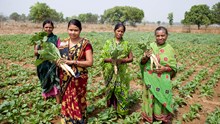
As the sun transitions into the northern hemisphere and nature begins to bloom with renewed vibrancy, the people of Assam come together to celebrate Bohag Bihu, the most cherished festival of the state. Also known as Rongali Bihu, this spring festival marks the Assamese New Year and heralds a season of hope, prosperity, and togetherness. Every year on 15th of April, Bohag Bihu aligns with several agrarian New Year festivals celebrated across India, such as Baisakhi in Punjab, Poila Boishakh in West Bengal, Pana Sankranti in Odisha and Vishu in Kerala.
More than just a festival, Bohag Bihu is a vibrant expression of Assam’s agrarian roots, rich cultural heritage, and the spirit of community. It is a time when people set aside their daily worries and immerse themselves in joyous rituals, feasting, music, and dance.
Bohag Bihu 2025: A Celebration of Spring, Soil, and Spirit
Bohag Bihu is the first among the three Bihu festivals celebrated in Assam—the others being Magh Bihu (Bhogali Bihu) and Kati Bihu (Kongali Bihu). Bohag Bihu marks the beginning of the sowing season and is closely associated with agriculture, particularly the preparation of fields for paddy cultivation. The festival spans over seven days, each day with a distinct name and associated traditions, collectively known as Xaat Bihu.
These seven days are:
-
Goru Bihu (Cow Bihu) – The first day is dedicated to livestock, especially cows and buffaloes. On this day, farmers bathe their cattle with turmeric and black gram paste, adorn them with garlands, and allow them to rest. It is an expression of gratitude for their contribution to farming.
-
Manuh Bihu (Human Bihu) – On the second day, people take traditional baths using raw turmeric and aromatic herbs, wear new clothes, and seek blessings from elders. This day represents personal purification and renewal.
-
Gosain Bihu – This day is reserved for worshipping deities and household gods. Offerings are made for a prosperous year ahead.
-
Tator Bihu, Senehi Bihu, Mela Bihu, and Chera Bihu follow, each with community gatherings, fairs, sports, and the exchange of love and affection. Young men and women sing Bihu geet (folk songs) and perform the energetic and graceful Bihu dance, often accompanied by the rhythmic beats of traditional instruments like the dhol, pepa, and gogona.
Rooted in Agriculture: Significance of the Foxtail Orchid in Bohag Bihu
At its heart, Bohag Bihu is deeply interwoven with the rhythms of agriculture in Assam. It signals the onset of the sowing season, as farmers across the state ready their fields, till the soil, and plant the first crops of the year, particularly ahu dhan (autumn rice). Every ritual of the festival, from washing and honoring cattle to cleansing homes and tools, is grounded in agrarian practice and reflects the hopes of a fruitful year ahead. Beyond the physical tasks, Bihu is also a time of social renewal, where farmers exchange seeds, share knowledge, and strengthen their sense of community.
Adding to this symbolism is the foxtail orchid (Rhynchostylis retusa), known locally as kopou phool, which blooms during this time. As Assam’s state flower, it holds deep cultural significance, adorning Bihu dancers and brides alike, and representing love, fertility, and joy. Its presence in the celebrations further highlights the deep connection between nature, agriculture, and Assamese identity.

Cultural Significance of Muga Silk in Bohag Bihu
Muga silk, often referred to as the “golden thread” of Assam, holds a place of pride in Bohag Bihu celebrations. Woven exclusively in Assam, this indigenous silk is known for its natural golden hue, durability, and glossy texture, making it a cherished fabric for traditional attire. During Bohag Bihu, men and women dress in their finest Muga silk garments—mekhela chador for women and dhoti kurta or suria for men, symbolizing cultural pride and elegance.
The shimmering fabric not only enhances the festive spirit but also reflects the rich heritage of Assamese handloom craftsmanship. Wearing Muga silk during Bihu is more than a matter of tradition; it is an expression of identity, respect for artisanal skills, and a tribute to the region’s deep connection with its natural and cultural resources.
Bihu Dance and Music: Soul of the Celebration
The Bihu dance, performed during Bohag Bihu, is perhaps the most iconic cultural representation of Assam. With lively steps, expressive gestures, and vibrant muga attire, the dance captures the spirit of spring, romance, and rural life. Young men and women gather in open fields, under the blooming trees, to perform this dance in unison, creating a spectacle of unity and joy.
The accompanying music, known as Bihu geet, is equally compelling. These folk songs are often playful, romantic, and filled with metaphors drawn from nature. They celebrate love and the beauty of rural life, and the charm of Assamese culture.
Culinary Delights of Bohag Bihu
No Assamese festival is complete without its array of traditional dishes, and Bohag Bihu is no exception. During this time, families prepare a variety of sweets and savories made from rice, coconut, sesame, and jaggery. Some of the popular delicacies include Ladoos, Pithas, Jolpan and many more.
Seasonal vegetables, fish curries, and home-brewed rice beer in some communities also form a part of the festive meals. These dishes are not only delicious but also reflect the region’s dependence on local, seasonal ingredients.
Bohag Bihu is more than just a festival; it is a powerful expression of Assamese identity and pride. Regardless of religion, caste, or ethnicity, people across Assam come together to celebrate it with equal enthusiasm. It is a secular festival that transcends social barriers and brings communities together.
In urban areas, Bihu is celebrated with cultural shows, Bihu dance competitions, and musical evenings organized by local societies. In rural areas, traditional practices remain strong, with the community gathering in fields and courtyards for Husori, a group performance where singers and dancers visit homes to bless families in return for gifts.
Bohag Bihu is a beautiful reminder of the cyclical nature of life and the constant renewal it brings. As the fields are readied for sowing and the rivers begin to swell with spring rains, the hearts of Assamese people swell with hope and festivity. It is a time to reconnect—with one’s roots, with family and friends, and with nature itself. In celebrating Bohag Bihu, Assam not only welcomes a new year but also honors its timeless traditions, agricultural heritage, and the enduring strength of its cultural fabric.
May this Bihu bring joy, prosperity, and new beginnings to all!
















